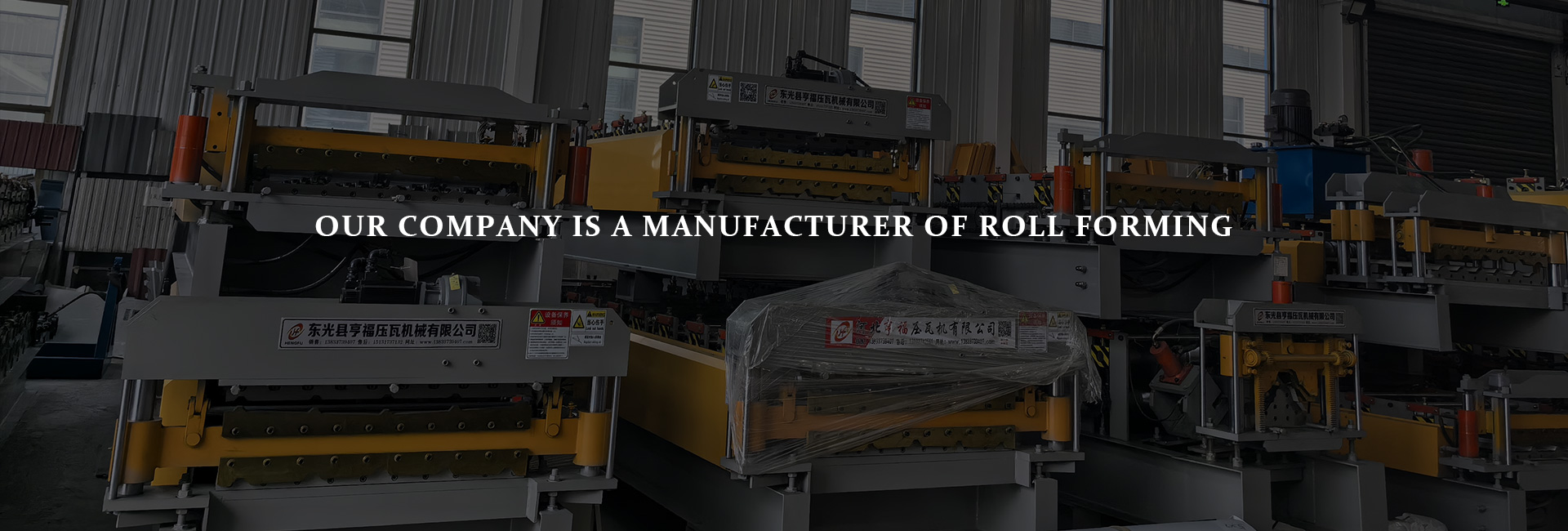Roll forming machines are essential for producing metal profiles with high precision. However, like any sophisticated equipment, they can experience issues that affect their performance. Here are some common problems and their solutions to help keep your roll forming machine running smoothly:
1. Addressing Hydraulic Cylinder Creeping
Creeping in hydraulic cylinders can disrupt the smooth operation of a roll forming machine. This issue can manifest as intermittent slipping or stopping of the machinery. Here’s how to resolve it:
Air Intrusion: Air in the hydraulic cylinder can cause erratic movement. To eliminate this, install an exhaust device or cycle the hydraulic cylinder rapidly to expel air.
Lubrication Issues: Insufficient lubrication between moving parts can lead to dry or semi-friction, causing crawling. Regularly check and maintain proper lubrication.
Sealing Ring Problems: If the sealing ring at the hydraulic cylinder’s end cover is improperly adjusted, it can cause leakage or movement issues. Ensure the sealing ring is correctly tightened to allow smooth piston movement without leakage.
Leakage: Significant leakage from the hydraulic cylinder can also lead to crawling. Address this by reducing leakage or increasing the hydraulic pump capacity.
Load Changes: Fluctuations in the system oil supply due to load changes can cause crawling. Use a stable speed control valve and avoid hose connections between the hydraulic cylinder and the speed control valve to minimize deformation and crawling.
Misalignment: If the hydraulic cylinder is misaligned with the guide rail, it can lead to performance issues. Check and correct the alignment to ensure parallelism.
2. Eliminating Noise and Vibration
Noise and vibration in the hydraulic system can affect the operation and lifespan of your roll forming machine. Here’s how to tackle these issues:
Pump Noise and Vibration: Noise and vibration from the pump can cause resonance in the pipeline and oil tank. Connect the pump’s oil inlet and outlet with hoses, and install the pump separately from the oil tank. Use anti-vibration materials under the pump and oil tank to reduce noise.
System Resonance: Hydraulic valve spring resonance can be mitigated by adjusting the spring’s installation position and stiffness, or by switching to an external oil drain form for the overflow valve. Also, consider using a remote control overflow valve and optimizing pipeline dimensions.
Air Intrusion: Air entering the hydraulic system can create noise through cavitation. Install an exhaust device on the hydraulic cylinder and cycle the actuator rapidly after starting to expel trapped air.
3. Resolving Abnormal Pressure in Hydraulic Pumps
Abnormal pressure in hydraulic pumps can affect machine performance. Address these issues with the following solutions:
Loose Pump Cover Screws: Tighten any loose screws on the pump cover to restore oil pressure.
Air Leakage: Check and seal any leaks in the suction pipe to ensure proper pressure buildup.
System Leaks: Inspect the hydraulic system for leaks and repair them to maintain appropriate pressure levels.
4. Fixing Hydraulic Cylinder Leakage
Hydraulic cylinder leakage can lead to inefficiencies and operational problems. Here’s how to address it:
Seal Damage: Replace damaged or deformed seals. For issues caused by high temperatures, address the root cause while replacing the seal.
Piston Rubber Ring Wear: Replace worn or fractured piston rubber rings and ensure the hydraulic oil is clean to prevent future wear. Adjust pressure settings to avoid exceeding rated pressures.
Retaining Ring Breakage: Prevent damage to retaining rings during assembly by using appropriate tools, as damaged rings can lead to seal failure.
5. Dealing with Insufficient Flow
Insufficient flow in the hydraulic system can impair machine performance. Here’s what you can do:
Pump Issues: Check for damaged pump parts and replace or repair them. Prevent air ingestion by maintaining proper pump function and cleaning or repairing variable pumps as needed.
Pressure Distribution Valve: Repair or replace the pressure distribution valve if it is not functioning correctly.
Oil Viscosity: Adjust oil viscosity by changing to the appropriate type and monitoring oil temperature effects.
Overflow Valve: Ensure the overflow valve operates correctly to maintain proper flow.
Component Leakage: Address leakage in hydraulic cylinders, valves, and other components with appropriate measures for each specific issue.
Flow Control Valve Adjustment: Repair or renew the flow control valve adjustment mechanism to ensure smooth operation.
By addressing these common issues with proactive maintenance and timely repairs, you can ensure your roll forming machine operates efficiently and reliably.
Optimize Your Roll Forming Machine with Expert Support
Don't let hydraulic issues slow down your production. For tailored solutions and expert advice on maintaining and optimizing your roll forming machine, contact us today. Our team of specialists is ready to provide the support you need to keep your equipment running at peak performance. Reach out now and experience the difference expert care can make for your business!
Contact us for a consultation and get your roll forming machine operating at its best!







